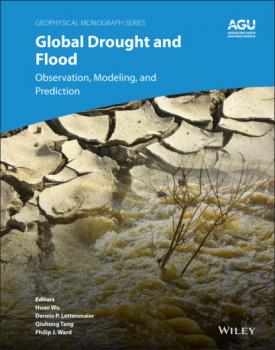John Wiley & Sons Limited
Все книги издательства John Wiley & Sons LimitedComputational Analysis and Deep Learning for Medical Care
This book discuss how deep learning can help healthcare images or text data in making useful decisions”. For that, the need of reliable deep learning models like Neural networks, Convolutional neural network, Backpropagation, Recurrent neural network is increasing in medical image processing, i.e., in Colorization of Black and white images of X-Ray, automatic machine translation, object classification in photographs / images (CT-SCAN), character or useful generation (ECG), image caption generation, etc. Hence, Reliable Deep Learning methods for perception or producing belter results are highly effective for e-healthcare applications, which is the challenge of today. For that, this book provides some reliable deep leaning or deep neural networks models for healthcare applications via receiving chapters from around the world. In summary, this book will cover introduction, requirement, importance, issues and challenges, etc., faced in available current deep learning models (also include innovative deep learning algorithms/ models for curing disease in Medicare) and provide opportunities for several research communities with including several research gaps in deep learning models (for healthcare applications).
Global Drought and Flood
Recent advances in the modeling and remote sensing of droughts and floods Droughts and floods are causing increasing damage worldwide, often with devastating short- and long-term impacts on human society. Forecasting when they will occur, monitoring them as they develop, and learning from the past to improve disaster management is vital. Global Drought and Flood: Observation, Modeling, and Prediction presents recent advances in the modeling and remote sensing of droughts and floods. It also describes the techniques and products currently available and how they are being used in practice. Volume highlights include: Remote sensing approaches for mapping droughts and floods Physical and statistical models for monitoring and forecasting hydrologic hazards Features of various drought and flood systems and products Use by governments, humanitarian, and development stakeholders in recent disaster cases Improving the collaboration between hazard information provision and end users The American Geophysical Union promotes discovery in Earth and space science for the benefit of humanity. Its publications disseminate scientific knowledge and provide resources for researchers, students, and professionals.
Pedestrian Inertial Navigation with Self-Contained Aiding
Explore an insightful summary of the major self-contained aiding technologies for pedestrian navigation from established and emerging leaders in the field Pedestrian Inertial Navigation with Self-Contained Aiding delivers a comprehensive and broad treatment of self-contained aiding techniques in pedestrian inertial navigation. The book combines an introduction to the general concept of navigation and major navigation and aiding techniques with more specific discussions of topics central to the field, as well as an exploration of the future of the future of the field: Ultimate Navigation Chip (uNavChip) technology. The most commonly used implementation of pedestrian inertial navigation, strapdown inertial navigation, is discussed at length, as are the mechanization, implementation, error analysis, and adaptivity of zero-velocity update aided inertial navigation algorithms. The book demonstrates the implementation of ultrasonic sensors, ultra-wide band (UWB) sensors, and magnetic sensors. Ranging techniques are considered as well, including both foot-to-foot ranging and inter-agent ranging, and learning algorithms, navigation with signals of opportunity, and cooperative localization are discussed. Readers will also benefit from the inclusion of: A thorough introduction to the general concept of navigation as well as major navigation and aiding techniques An exploration of inertial navigation implementation, Inertial Measurement Units, and strapdown inertial navigation A discussion of error analysis in strapdown inertial navigation, as well as the motivation of aiding techniques for pedestrian inertial navigation A treatment of the zero-velocity update (ZUPT) aided inertial navigation algorithm, including its mechanization, implementation, error analysis, and adaptivity Perfect for students and researchers in the field who seek a broad understanding of the subject, Pedestrian Inertial Navigation with Self-Contained Aiding will also earn a place in the libraries of industrial researchers and industrial marketing analysts who need a self-contained summary of the foundational elements of the field.









